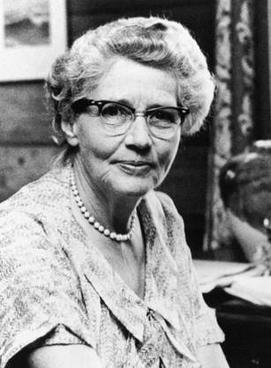
Helen Brooke Taussig was an American cardiologist who is best known for her contributions to the treatment of “blue baby” syndrome. Helen Taussig was born in Cambridge, Massachusetts, in 1898. Taussig’s childhood was marred by several difficulties, including the death of her mother when Taussig was only 11 years old. Taussig struggled with severe dyslexia and partial deafness. However, these difficulties did not deter her from following her heart.
She earned a bachelors degree from the University of California, Berkeley, in 1921 and went on to study medicine from the Johns Hopkins University School of Medicine and graduated in 1927. Taussig initially worked in the adult heart clinic run by Dr. Edward Perkins Carter. Recognising her abilities, Dr. Edwards Park offered Taussig a residency position in paediatric medicine. Two years later, Taussig was named the head of the paediatric cardiac clinic at the Harriet Lane Home of Johns Hopkins, a position she held until her retirement in 1963.
At 32 years old, Helen began to lose her hearing fully. Using stethoscope to listen to patients heartbeat became a challenge. Although she used hearing aids and lip reading to communicate with her patients, there wasn’t a good substitute for the standard stethoscope in the 1930s. Taussig learned to “listen” with her hands. She gently placed her fingers on a child’s chest and felt for murmurs. She became too good at it that she was able to identify and recognise common beat pattems in the malformed hearts of infant patients.
In the meantime, Taussig focussed her research on congenital heart defects – particularly the blue baby syndrome.” Blue baby syndrome is commonly caused by a congenital heart defect that reduces the amount of oxygenated blood being pumped throughout the body. Using fluoroscopy, Taussig observed that these children had decreased pulmonary blood flow to the lungs, which reduced the amount of blood available for oxygenation. Taussig proposed that creating an arterial patent ductus, or shunt, would alleviate the problem. Together with her colleagues Alfred Blalock and Vivien Thomas, she developed the Blalock-Taussig shunt, an artery-like tube designed to deliver oxygen-rich blood from the lungs to the heart. Together, they successfully implanted Blalock-Taussig shunt on an infant in 1944. Soon she became widely recognised as a highly skilled physician.
She was awarded the Medal of Freedom by U.S. President Lyndon B. Johnson in 1964, and in 1965 Taussig became the first woman president of the American Heart Association. Taussig is also known for her work in banning thalidomide, a drug given to pregnant women that was later found to cause birth defects in the babies born to them.
Picture Credit : Google




